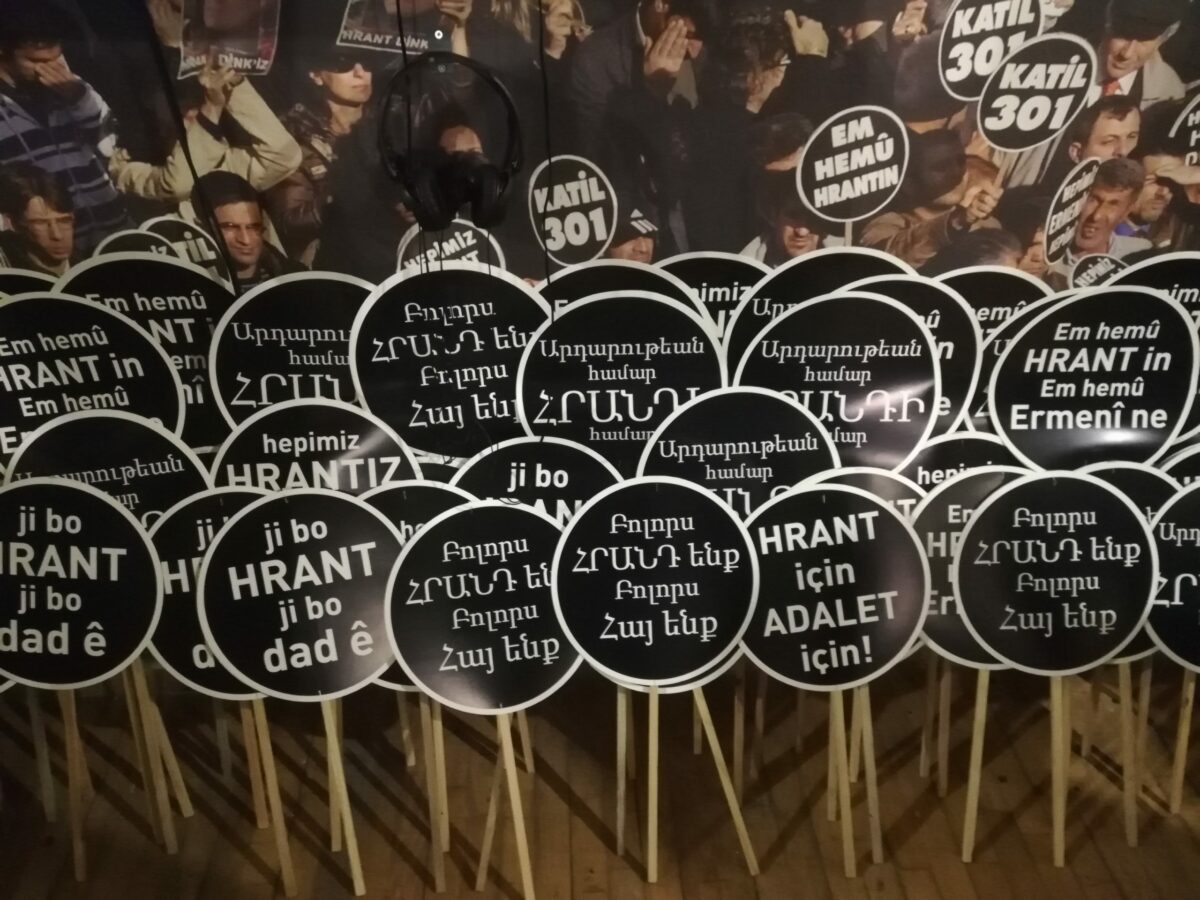“From now on, your actions should be based not only on your feelings but also on your thoughts. You can keep a nation alive with its feelings, but do not forget that you are no longer just a nation, you are a state. This development, from nation to state, has its price, and you cannot keep a state only with feelings.”
These words of Hrant Dink are surprisingly relevant today, 15 years after his death, when the foundations of statehood in Armenia are shaking, first of all, because of the exaggeration of emotional national features.
When nationality becomes either an occasion for self-admiration or an insult to another, the idea of the state itself diminishes.
It is enough to remember how words are heard in Armenia today from various public platforms about who is the real Armenian and who is the Turk (that is, the flawed, the enemy, the traitor).
Such accusations tainted with swears have flooded the media and the political field, and they have not even left time to think for a moment that by calling each other “Turks” we find ourselves in a deadlock, from which we will pay a great price to get out.
The price mentioned by Hrant Dink is really very high now.

And Dink himself, the legendary Istanbul-Armenian journalist, editor-in-chief of the bilingual newspaper “Agos” and public figure, paid the highest price, becoming with his death a reasonable claimant of the need for dialogue between the two nations, Armenians and Turks.
The demand for that dialogue, building bridges, and listening to each other (importantly, without self-deception) was a priority for Hrant Dink.
And it is natural that after his assassination, his family and the established Hrant Dink Foundation try not to let the memories of Hrant Dink fade so that his work and thoughts on freedom of speech and human rights can be heard in the world.
The monument named after Hrant Dink has been operating in Istanbul for three years now and is located in the first editorial office of “Agos.” The memorial is called “23.5,” referring to Hrant Dink’s article “April 23 and a half,” which was published on April 23, 1996, in “Agos.”

Now the first building of “Agos” is at the same time a crime scene (Dink was killed near the entrance of the editorial office in 2007) and a museum area, where, as Hrant Dink’s widow Rakel Dink says, memories are gathered.
Memories are classified in such a way as though Hrant Dink speaks about himself – his work, thoughts, doubts, fears, and struggles.
Exhibits include excerpts from his articles, recordings, childhood and adolescence photos, videos of speeches, and more.
We hear, read, and see a man whose thoughts are still urgent today, and who paid with his life in order to not let his work die.
The exhibition built with that idea is also open to the people of Yerevan from May to July 2022.
Although there are differences between the Yerevan and Istanbul screenings (in Armenia, the emphasis is on materials about Armenians, and in Istanbul, on Turkish society), the principle is the same: to allow Hrant Dink to be heard without intermediaries, that is, without interference.
The opening of the Istanbul Monument coincided with the pandemic, which was also the reason why the virtual version of the monument was quickly created, which helps to understand the principle of the idea of a museum space dedicated to one person.

browse the digitized archive, establish direct contact with visitors to the Istanbul Memorial (the screen is always on), and if you wish, isolate yourself in a cell and tell your own story anonymously as a confession.
And there are texts everywhere: visual, audio and print, excerpts and quotes from Hrant Dink articles and books. You can take them, read them right in the hall or take them home.
Touches are required, as almost all media tools are activated.
And you can also leave your own comments on what the seemingly ordinary words mean. For example, freedom, memory, love, struggle, and land.
Hrant Dink’s widow said during the opening of the exhibition, “Hrant is here with you in Armenia, with his words, his explanations, his struggle. The life of every Armenian is a document of history. Yes, our life is also a document and it is the confirmation and testimony of 1915 and also today. I can say that we are lucky to belong to the minority because there is an interest in the minority, and a desire to learn.”
Hrant Dink’s widow and three daughters with their families and children were present at the opening of the exhibition. And it was an important day for everyone. Continuation and confirmation.

In the editorial office of “Agos”
And it should not be ignored that the opening of the Istanbul monument and the Yerevan exhibition also has a political context.
The political situation of the last three years in our region is extremely tense and the man-bridge Hrant Dink can be considered both a struggling martyr and a man-museum 15 years after his death. These two characters are difficult to combine, depending on the political opportunism every minute.
In any case, the trial of Hrant Dink’s murder is not over yet, and the criminals have not been punished.
Therefore, the legal process and the museum materials can be considered in parallel, perhaps also complementary dimensions.
Nune Hakhverdyan







